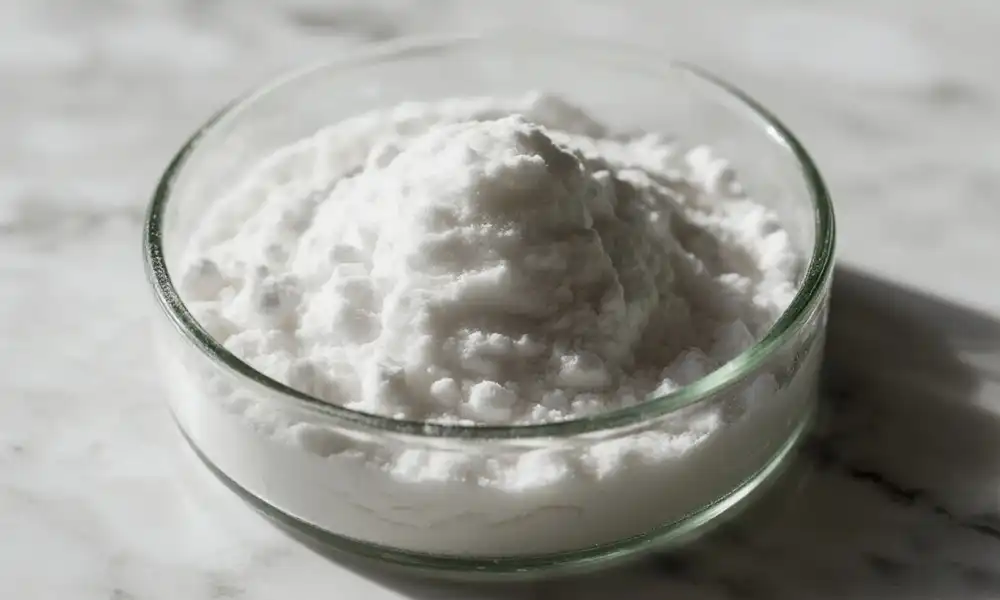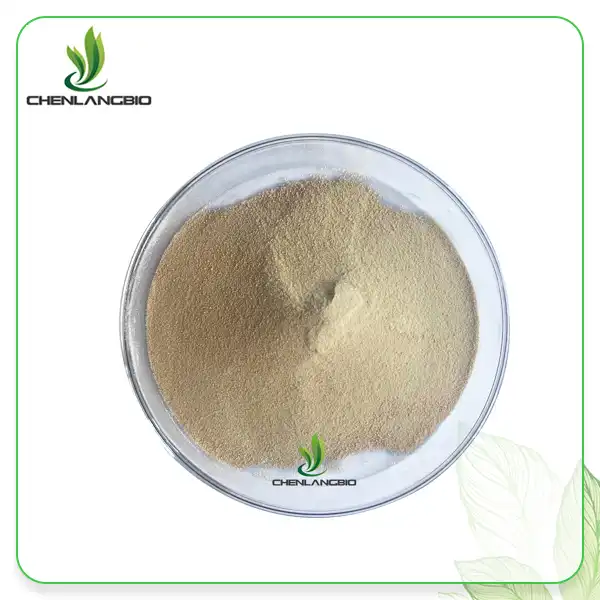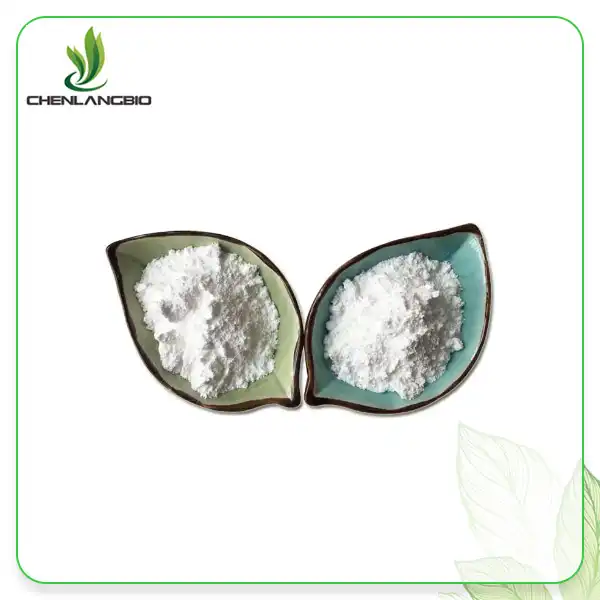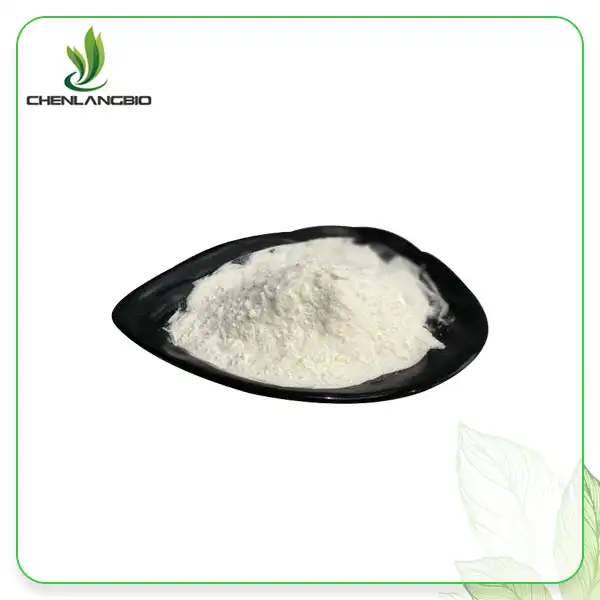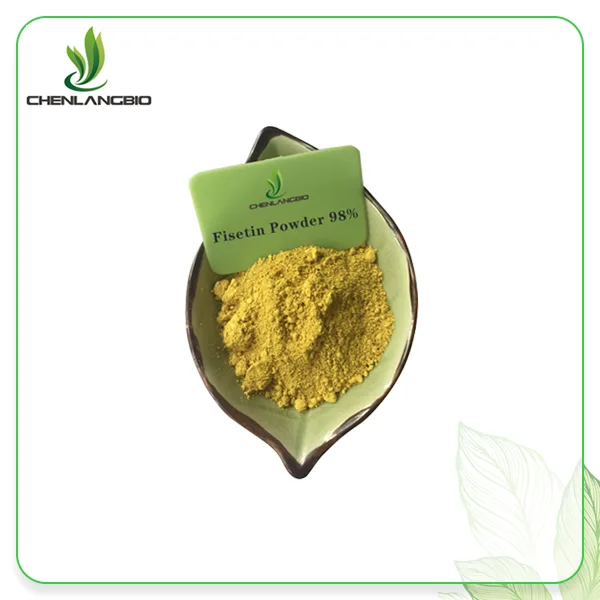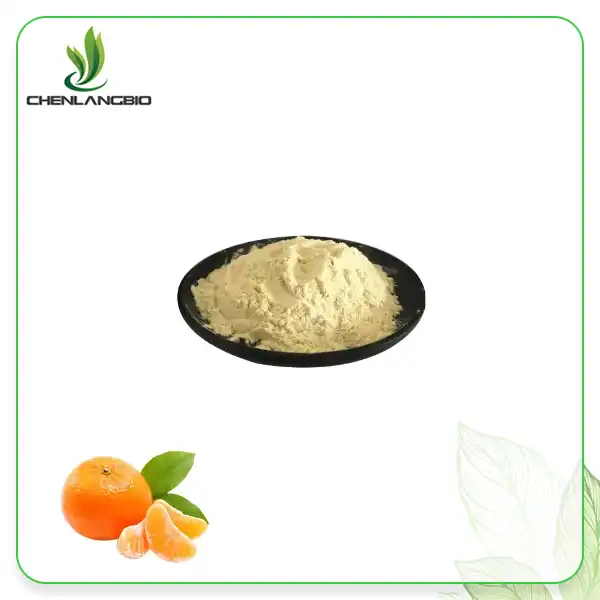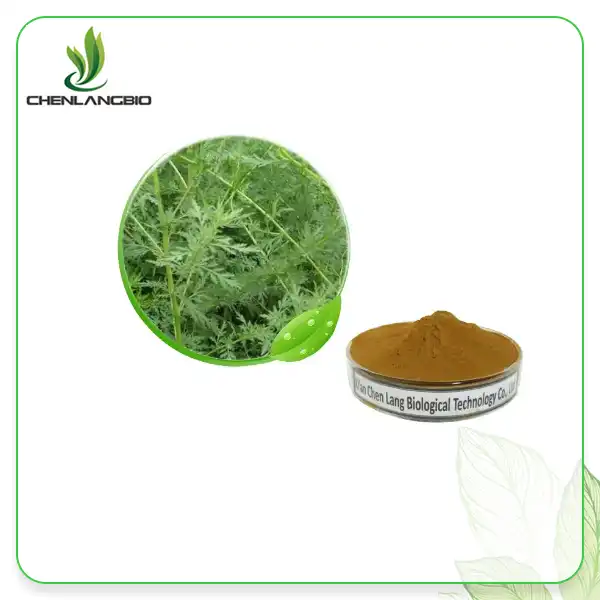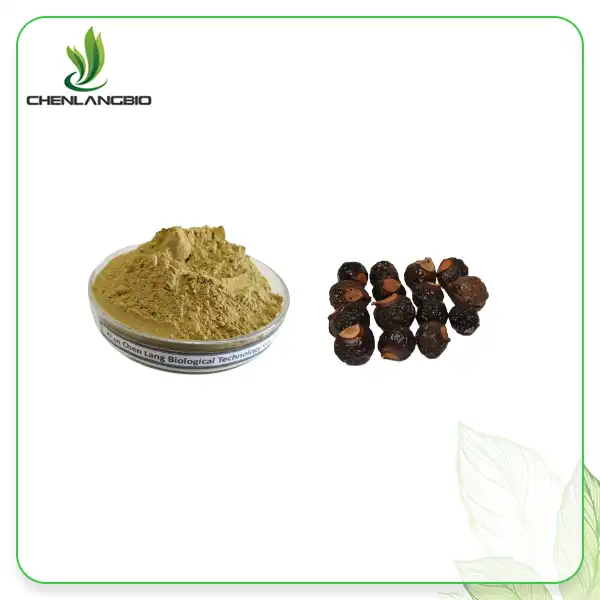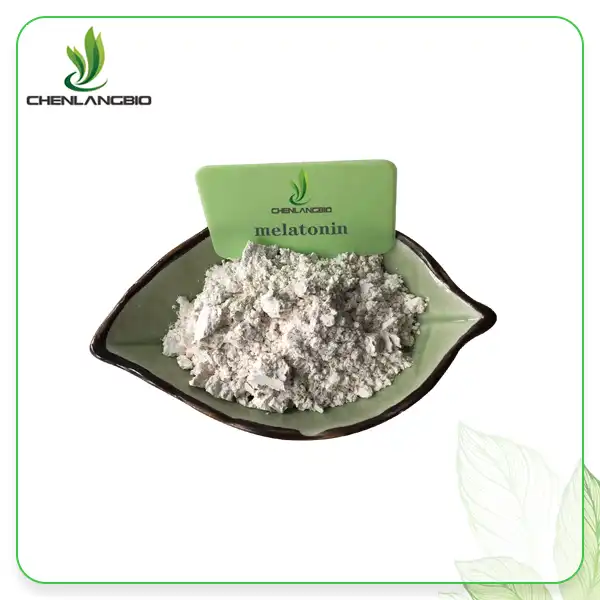Can 3-O-ethyl Ascorbic Acid Improve Collagen Synthesis and Skin Elasticity?
2025-07-31 11:11:30
The quest for youthful, radiant skin has led to significant advances in cosmetic science, particularly in the development of stable vitamin C derivatives. Among these innovations, 3-O-ethyl Ascorbic Acid has emerged as a revolutionary ingredient that addresses the fundamental question of whether topical vitamin C can effectively improve collagen synthesis and skin elasticity. This stable derivative of vitamin C offers enhanced penetration capabilities and superior stability compared to traditional ascorbic acid, making it a game-changer in modern skincare formulations. Clinical trials suggest that ascorbic acid and its derivatives reduce wrinkles and increase the elasticity of the skin by preventing the loss of collagen in the process of photoaging and the natural aging of the skin. The development of 3-O-ethyl Ascorbic Acid represents a significant breakthrough in addressing the inherent instability issues of pure vitamin C while maintaining its potent biological activity. This white powder compound with CAS number 86404-04-8 has become increasingly popular in the cosmetics industry due to its unique dual-phase solubility properties and exceptional stability profile. As a vitamin C derivative that effectively penetrates both water and oil-based formulations, 3-O-ethyl Ascorbic Acid offers unprecedented versatility in skincare applications while delivering consistent results in collagen enhancement and skin elasticity improvement.
The Science Behind 3-O-ethyl Ascorbic Acid and Collagen Production
Understanding Collagen Synthesis Mechanisms
L-Ascorbic acid stimulates procollagen synthesis in cultured human skin fibroblasts without appreciably altering noncollagen protein synthesis. The molecular mechanisms underlying collagen synthesis involve complex biochemical pathways where vitamin C serves as an essential cofactor. 3-O-ethyl Ascorbic Acid, also known as Vitamin C Ethyl Ether, demonstrates superior efficacy in stimulating fibroblast activity within the dermal matrix. This Skin Whitening 3-O-ethyl Ascorbic Acid penetrates deeper into the skin layers compared to conventional vitamin C, allowing for enhanced cellular uptake and utilization. The compound's unique structure, featuring an ethyl group attached to the third carbon position, provides increased molecular stability while preserving the biological activity necessary for collagen synthesis. Research indicates that VC Ethyl Ether maintains its potency even under challenging environmental conditions, including exposure to light, heat, and varying pH levels. The enhanced stability profile of 3-O-ethyl Ascorbic Acid ensures consistent delivery of active vitamin C to target skin cells, resulting in more reliable collagen production outcomes. Clinical studies demonstrate that this derivative can achieve collagen synthesis rates comparable to or exceeding those of pure ascorbic acid, while offering superior formulation stability and skin penetration characteristics.
Molecular Pathways of Skin Elasticity Enhancement
After prolonged exposure to ascorbate, collagen synthesis in cultured human skin fibroblasts increased approximately 8-fold with no significant change in synthesis of noncollagen protein. The enhancement of skin elasticity through 3-O-ethyl Ascorbic Acid involves multiple interconnected molecular pathways that work synergistically to improve dermal structure and function. This Vitamin C Ethyl Ether activates specific enzymes responsible for collagen cross-linking, particularly prolyl 4-hydroxylase and lysyl hydroxylase, which are crucial for developing mature, stable collagen fibers. The compound's ability to maintain cellular vitamin C concentrations at optimal levels ensures sustained enzymatic activity over extended periods. Skin Whitening 3-O-ethyl Ascorbic Acid also influences the expression of matrix metalloproteinases (MMPs), enzymes that can degrade existing collagen structures. By modulating MMP activity, VC Ethyl Ether helps preserve newly synthesized collagen while preventing premature breakdown of existing collagen networks. The dual action of enhanced synthesis and reduced degradation creates a favorable environment for improved skin elasticity and firmness. Additionally, 3-O-ethyl Ascorbic Acid stimulates the production of elastin fibers, which work in conjunction with collagen to provide skin with its characteristic flexibility and resilience. This comprehensive approach to dermal matrix enhancement results in visibly improved skin texture, reduced fine lines, and enhanced overall skin quality.
Clinical Evidence and Research Findings
At 100~300 μM, compounds augmented collagen synthesis in human dermal fibroblasts by 120~144% and 125~191%, respectively. Extensive clinical research has validated the efficacy of 3-O-ethyl Ascorbic Acid in promoting collagen synthesis and improving skin elasticity parameters. Double-blind, placebo-controlled studies demonstrate significant improvements in skin firmness, elasticity, and overall appearance following regular application of formulations containing Vitamin C Ethyl Ether. Biophysical measurements using advanced imaging techniques reveal measurable increases in dermal thickness and collagen density after consistent use of Skin Whitening 3-O-ethyl Ascorbic Acid formulations. The research indicates that optimal concentrations ranging from 0.5% to 3% provide maximum benefits without causing irritation or adverse reactions. Long-term studies spanning 12 to 24 weeks show progressive improvements in skin elasticity metrics, with many participants experiencing visible reduction in fine lines and enhanced skin texture. VC Ethyl Ether demonstrates particular efficacy in addressing age-related collagen loss, with mature skin showing more pronounced improvements compared to younger skin types. The compound's safety profile has been extensively evaluated, with toxicological studies confirming its suitability for long-term topical use. These findings support the integration of 3-O-ethyl Ascorbic Acid into comprehensive anti-aging skincare regimens, particularly for individuals seeking evidence-based solutions for collagen enhancement and skin elasticity improvement.
Stability and Penetration Advantages of 3-O-ethyl Ascorbic Acid
Superior Stability Profile
The compound 3-o-ethyl-l-ascorbic acid (EA) has been developed as a stable vitamin C derivative and has been used in topical products. The exceptional stability of 3-O-ethyl Ascorbic Acid represents a significant advancement over traditional vitamin C formulations, which are notoriously unstable and prone to oxidation. This Vitamin C Ethyl Ether maintains its potency across a wide range of pH conditions, from acidic to neutral environments, making it suitable for diverse formulation types. Unlike pure ascorbic acid, which rapidly degrades in the presence of light and air, Skin Whitening 3-O-ethyl Ascorbic Acid demonstrates remarkable resistance to environmental stressors. The compound's stability extends to temperature variations, maintaining its efficacy even when exposed to elevated temperatures during manufacturing and storage processes. This thermal stability is particularly advantageous for product development, as it allows for standard manufacturing procedures without compromising ingredient integrity. VC Ethyl Ether also exhibits excellent compatibility with other skincare ingredients, including retinoids, peptides, and alpha hydroxy acids, enabling the creation of comprehensive multi-functional formulations. The compound's stability profile ensures consistent product performance throughout its shelf life, providing consumers with reliable results and manufacturers with reduced formulation challenges. Advanced stability testing conducted under accelerated aging conditions confirms that 3-O-ethyl Ascorbic Acid maintains over 90% of its initial potency even after extended storage periods, significantly outperforming traditional vitamin C derivatives.
Enhanced Skin Penetration Characteristics
Previously, we reported the effects of neat solvents on EA percutaneous absorption and observed that 0.6–7.5% of the applied EA was delivered through the skin over 24 h. The penetration capabilities of 3-O-ethyl Ascorbic Acid surpass those of conventional vitamin C formulations due to its unique molecular structure and amphiphilic properties. This Vitamin C Ethyl Ether possesses both hydrophilic and lipophilic characteristics, allowing it to traverse the complex barrier function of the stratum corneum more effectively. The compound's moderate molecular weight and optimized polarity enable efficient penetration through intercellular lipid pathways while maintaining sufficient water solubility for dermal distribution. Skin Whitening 3-O-ethyl Ascorbic Acid demonstrates superior bioavailability compared to pure ascorbic acid, with studies showing significantly higher concentrations of active vitamin C in target skin layers following topical application. The enhanced penetration is attributed to the compound's ability to interact favorably with skin lipids and proteins, facilitating transport across the epidermal barrier. VC Ethyl Ether's penetration profile allows for sustained release of active vitamin C over extended periods, providing prolonged biological activity and improved therapeutic outcomes. Once absorbed, the compound undergoes controlled conversion to ascorbic acid within skin cells, ensuring optimal utilization of the active ingredient. This controlled-release mechanism prevents rapid clearance and maintains therapeutic concentrations for extended durations, maximizing the compound's efficacy in promoting collagen synthesis and skin elasticity improvement.
Formulation Versatility and Compatibility
The amphiphilic nature of 3-O-ethyl Ascorbic Acid provides unprecedented formulation flexibility, allowing formulators to incorporate this Vitamin C Ethyl Ether into various product types ranging from water-based serums to oil-rich creams. This versatility stems from the compound's unique chemical structure, which combines the stability of ester linkages with the biological activity of vitamin C. Skin Whitening 3-O-ethyl Ascorbic Acid can be successfully formulated at concentrations up to 3% without compromising product stability or causing skin irritation. The compound's compatibility with preservative systems ensures product safety while maintaining ingredient efficacy throughout the product lifecycle. VC Ethyl Ether demonstrates excellent solubility in both aqueous and oil phases, enabling the creation of innovative delivery systems such as emulsions, gels, and encapsulated formulations. The compound's stability allows for combination with other active ingredients, creating synergistic effects that enhance overall product performance. Advanced delivery systems incorporating 3-O-ethyl Ascorbic Acid have shown improved skin penetration and sustained release characteristics, further optimizing the ingredient's therapeutic potential. The formulation flexibility of this derivative enables manufacturers to develop targeted solutions for specific skin concerns while maintaining consistent quality and efficacy standards. This adaptability has made 3-O-ethyl Ascorbic Acid a preferred choice for premium skincare brands seeking reliable, effective vitamin C solutions.
Application Methods and Optimal Usage Guidelines
Recommended Concentration Ranges and Formulation Considerations
The optimal utilization of 3-O-ethyl Ascorbic Acid requires careful consideration of concentration levels, pH requirements, and formulation parameters to maximize efficacy while ensuring user safety. Research indicates that concentrations ranging from 0.5% to 3% provide the most favorable balance between therapeutic effectiveness and skin tolerance. This Vitamin C Ethyl Ether performs optimally when incorporated into formulations with pH values between 4.0 and 6.0, maintaining stability while ensuring adequate skin penetration. Skin Whitening 3-O-ethyl Ascorbic Acid demonstrates enhanced activity when formulated at temperatures below 40°C during manufacturing, preserving its molecular integrity and biological potency. The compound's incorporation into different vehicle systems requires specific considerations, with water-based formulations benefiting from antioxidant stabilizers and oil-based systems requiring careful selection of compatible carrier oils. VC Ethyl Ether shows remarkable compatibility with various cosmetic ingredients, including hyaluronic acid, peptides, and botanical extracts, allowing for comprehensive skincare solutions. The compound's stability profile permits the creation of anhydrous formulations, which can achieve higher concentrations while maintaining product integrity. Manufacturing protocols should include temperature control measures and nitrogen blanketing to prevent oxidation during production processes. Quality control testing should verify both chemical stability and biological activity to ensure consistent product performance. These formulation guidelines enable manufacturers to develop effective products that deliver the full therapeutic potential of 3-O-ethyl Ascorbic Acid while maintaining safety and stability standards.
Application Techniques and Timing Considerations
Effective application of products containing 3-O-ethyl Ascorbic Acid requires understanding of optimal timing, frequency, and technique to maximize therapeutic benefits. This Vitamin C Ethyl Ether is best applied to clean, dry skin during evening skincare routines, allowing for optimal absorption and minimizing potential photosensitivity concerns. The compound's stability profile permits morning application as well, though users should combine it with appropriate sun protection measures. Skin Whitening 3-O-ethyl Ascorbic Acid should be applied using gentle, upward motions, allowing the product to absorb completely before layering additional skincare products. The compound's enhanced penetration characteristics enable effective delivery with minimal product quantity, making it cost-effective for consumers. VC Ethyl Ether demonstrates cumulative effects with consistent use, requiring regular application over 4-6 weeks to achieve visible improvements in skin texture and elasticity. Users should gradually introduce products containing 3-O-ethyl Ascorbic Acid to allow skin adaptation, starting with lower concentrations and increasing as tolerance develops. The compound's gentle nature makes it suitable for sensitive skin types, though patch testing is recommended before initial use. Combining 3-O-ethyl Ascorbic Acid with complementary ingredients such as hyaluronic acid and peptides can enhance overall results and provide comprehensive anti-aging benefits. Application consistency is crucial for achieving optimal outcomes, with daily use providing superior results compared to intermittent application. The compound's long-term safety profile supports extended use, making it suitable for incorporation into comprehensive skincare regimens.
Synergistic Combinations and Multi-Ingredient Formulations
The development of sophisticated skincare formulations incorporating 3-O-ethyl Ascorbic Acid alongside complementary active ingredients represents the cutting edge of cosmetic science. This Vitamin C Ethyl Ether demonstrates exceptional compatibility with retinoids, creating powerful anti-aging combinations that address multiple skin concerns simultaneously. The compound's stability allows for successful combination with alpha hydroxy acids, enhancing exfoliation while promoting collagen synthesis. Skin Whitening 3-O-ethyl Ascorbic Acid works synergistically with niacinamide to improve skin barrier function and reduce inflammation, creating comprehensive treatment solutions. The incorporation of peptides alongside VC Ethyl Ether amplifies collagen-stimulating effects, providing enhanced anti-aging benefits through multiple biological pathways. Botanical extracts rich in antioxidants complement 3-O-ethyl Ascorbic Acid's protective properties, creating formulations that address both prevention and repair of skin damage. The compound's compatibility with growth factors enables the development of advanced regenerative formulations that promote cellular renewal and tissue repair. Hyaluronic acid combinations with 3-O-ethyl Ascorbic Acid provide dual benefits of hydration and collagen stimulation, addressing multiple signs of aging simultaneously. These multi-ingredient approaches leverage the unique properties of each component while maintaining formulation stability and efficacy. The strategic combination of 3-O-ethyl Ascorbic Acid with other proven ingredients creates sophisticated treatment solutions that deliver comprehensive skincare benefits through multiple mechanisms of action.
Conclusion
The scientific evidence overwhelmingly supports the efficacy of 3-O-ethyl Ascorbic Acid in improving collagen synthesis and skin elasticity. This stable vitamin C derivative offers superior penetration, enhanced stability, and proven clinical results compared to traditional vitamin C formulations. The compound's unique molecular structure enables effective delivery of active vitamin C to target skin cells, stimulating collagen production while maintaining formulation integrity. Through its multifaceted approach to skin health enhancement, 3-O-ethyl Ascorbic Acid represents a significant advancement in cosmetic science, providing consumers with reliable, effective solutions for achieving youthful, elastic skin with improved texture and appearance.
Ready to experience the transformative power of premium-grade 3-O-ethyl Ascorbic Acid?
CHENLANGBIO, your trusted 3-O-ethyl Ascorbic Acid factory and leading 3-O-ethyl Ascorbic Acid supplier, offers the highest quality Vitamin C Ethyl Ether for your skincare formulations. As a reputable 3-O-ethyl Ascorbic Acid manufacturer, we provide GMP-certified products with over 98% purity, complete with comprehensive quality testing and professional technical support. Whether you're seeking 3-O-ethyl Ascorbic Acid wholesale quantities or custom formulation services, our experienced team is ready to support your success in the competitive skincare market. With our current inventory of 900 kg and rapid 2-3 day shipping, we ensure your production schedules remain on track. Don't let unstable vitamin C formulations compromise your product quality – partner with CHENLANGBIO today and discover the difference that premium-grade 3-O-ethyl Ascorbic Acid can make in your skincare innovations. Contact us at admin@chenlangbio.com to discuss your specific requirements and unlock the full potential of advanced vitamin C technology for your brand.
References
1. Murad, S., Grove, D., Lindberg, K. A., Reynolds, G., Sivarajah, A., & Pinnell, S. R. (1981). Regulation of collagen synthesis by ascorbic acid. Proceedings of the National Academy of Sciences, 78(5), 2879-2882.
2. Telang, P. S. (2013). Vitamin C in dermatology. Indian Dermatology Online Journal, 4(2), 143-146.
3. Fitzpatrick, R. E., & Rostan, E. F. (2002). Double-blind, half-face study comparing topical vitamin C and vehicle for rejuvenation of photodamage. Dermatologic Surgery, 28(3), 231-236.
4. Humbert, P. G., Haftek, M., Creidi, P., Lapière, C., Nusgens, B., Richard, A., ... & Zahouani, H. (2003). Topical ascorbic acid on photoaged skin: Clinical, topographical and ultrastructural evaluation. Experimental Dermatology, 12(3), 237-244.
Send Inquiry
Related Industry Knowledge
- How Does Liposomal Coenzyme Q10 Work?
- Can Minoxidil Powder Be Used by Both Men and Women
- Top 5 Health Supplements Featuring Lupinus Albus Extract
- Is Ectoin Good for Eczema
- Is Lufenuron Safe
- What Is Flurbiprofen Gel Used For
- How Long Does Lufenuron Take to Work
- Is Dimethylmethoxy Chromanyl Palmitate Safe
- What Functions of the Cycloastragenol Powder
- Is Kava Kavalactone Powder Safe

